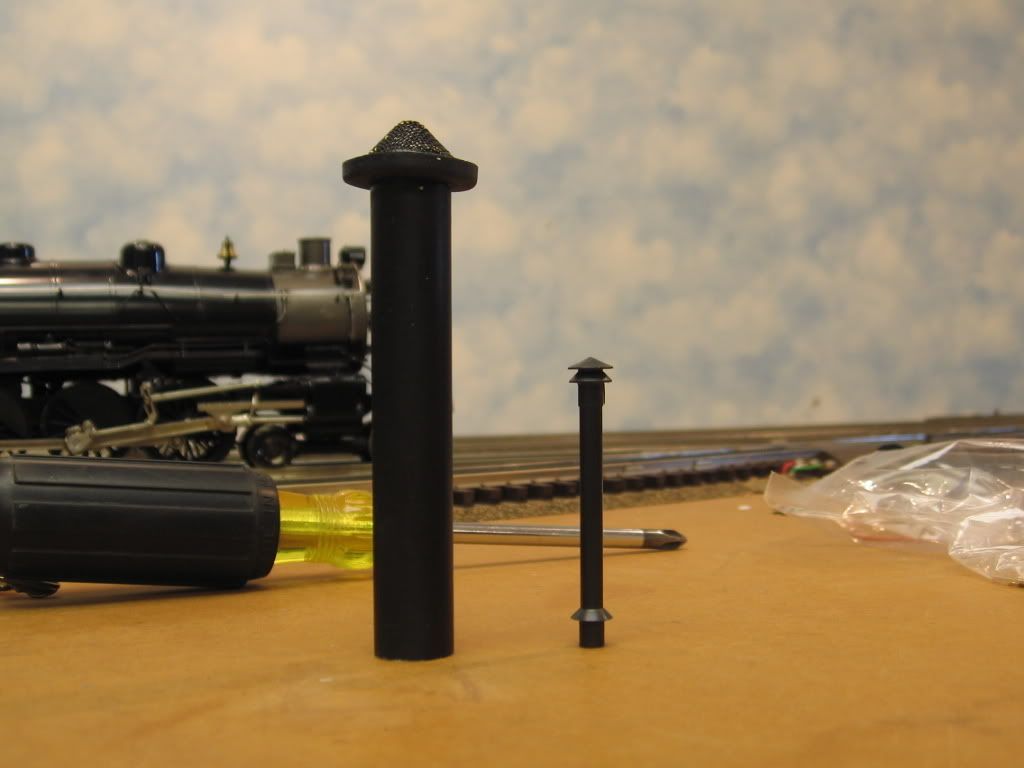I was wondering how smoke and vapor were ventilated from real locomotive sheds. Did they have active exhaust ventilation systems? Are those features accounted in model sheds? I was also looking at historical photos of Broad Street Station in Philadelphia and wondering how ventilation was planned into the design. Any thoughts?
Replies sorted oldest to newest

As for train sheds, from what I've read they simply relied on their cathedral-sized proportions to allow the exhaust to dissipate.
Attachments
Korber Roundhouse kits had exhaust stack for each bay. Older kits were maybe a bit more unique. The Ross Roundhouse kits had collector hoods, as part of the detail.
Korber roof top stacks.

The (or at least, "a") proper NAmerican term is "smoke jack"; the steamer was positioned with the smoke stack under this "jack"; there was a funnel-shaped section at the bottom/stack end.
Note that the typical position for steamers in a roundhouse was tender-out - not nose out as so many modelers unfortunately want to spot them. Most roundhouses had smoke jacks only at the far end of the track - toward the wall, not toward the turntable. If a steamer needed to be put in tender-first (situations occasionally called for this), the loco was typically just spotted with its "nose out the door", along with the smoke, if needed. Of course, a "cold" loco made no smoke, so it wouldn't matter. Roundhouses were not for major repairs on large roads, so most locos there were not cold long, if at all.
Our roundhouses should typically show only tender derrieres (careful...), not locomotive faces.
There are some good photos of shed interiors here:http://www.shorpy.com/jack-delano-photos. Many of the British sheds I've seen had raised roofs with open-able vents.





